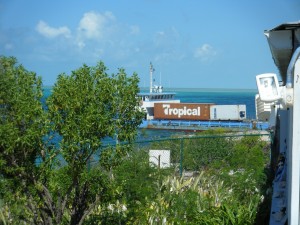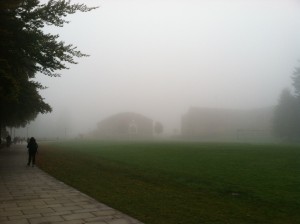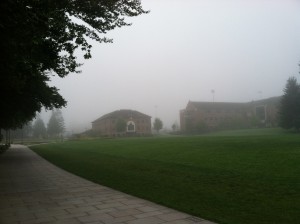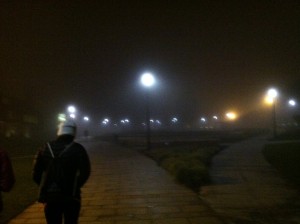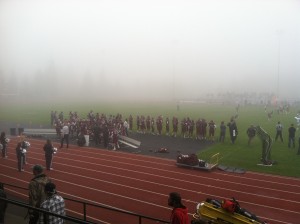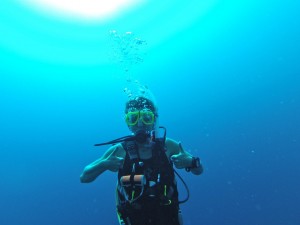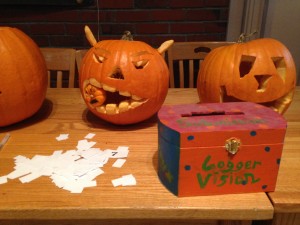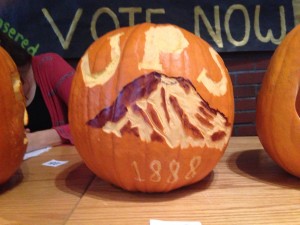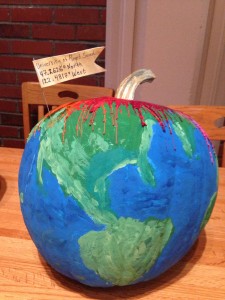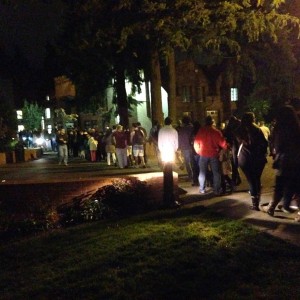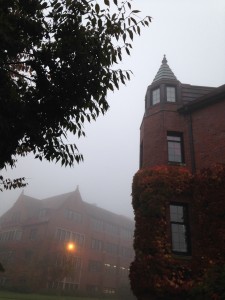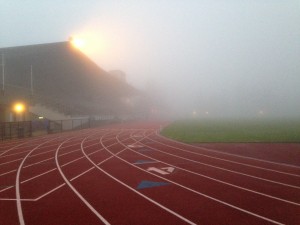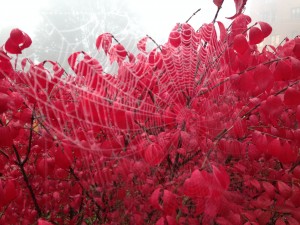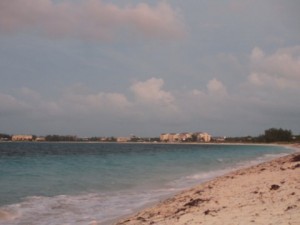In which the unbreakable circle of Rat Skin Thong is revealed to the world.
The phrase “Rat Skin Thong” is one that, most unfortunately, I cannot claim credit for; it was bequeathed unto me, like a sacred name of unspeakable power, by the aunt of a very close friend of mine during a barbeque her family was hosting. The close friend of mine, whose name is Fiona Flynn, debated with me about changing the name of the band that she and I comprised from “Dwolf and the Fat Angry Chicks/Fdog and the Funky Crew” (depending on who was singing lead) to simply “Rat Skin Thong”, although ultimately deciding against it. Never did I think the name would arise again.
Three years later, I sat with my new housemates at 1210 North Alder, discussing how we all fit together as a group and what we could call ourselves. Some (undoubtedly lamer) names arose that I’ve long since forgotten, but I assumed that when I suggested Rat Skin Thong as a group name, it would be struck down. Miraculously, the name stuck, and here, ladies and gentlemen (and anyone in-between or outside), are the lovely ladies of Rat Skin Thong:
Rosa Dale-Moore
Autobiography Title: Oh Hai Squirrel
Major: Molecular and Cellular Biology – Neuroscience Emphasis, Honors Program
Spirit Animal: Rose-Tu the Elephant from the Oregon Zoo
Memorable Quote: “All my life I wanna be a doctor; HACK HACK CHOP CHOP.”
Isabelle Chae
Autobiography Title: I Live in a Perpetual State of Awkward
Major: Undecided
Spirit Animal: Nellie the Otter from the Point Defiance Zoo
Memorable Quote: “True life.”
Alexa Himonas
Autobiography Title: They Can’t Break You If You Don’t Have a Spine
Major: Molecular and Cellular Biology and Religion, minor in Music
Spirit Animal: Dolphin
Memorable Quote: “I want his face… on my face.”
Shoshana Strom
Autobiography Title: Smosh the Troll
Major: Religion
Spirit Animal: Chinchila
Memorable Quote: “Oh… sweetie.”
Kaylene Barber
Autobiography Title: At Least He Has a Penis
Major: Music Business
Spirit Animal: Mouse
Memorable Quote: “How sexual can you make these posts, Daniel?”
Daniel Wolfert
Autobiography Title: Drug Sluts
Major: Music Composition
Spirit Animal: Lion-turtle
Memorable Quote: “My spirit color is indigo, because I’m not red enough to be purple.”
Many things bind us together, among them food… jk lolz, that’s it.
Well, not exactly. Rosa, Isabelle and Alexa are bound by a deep interest in science, medicine and the disgusting, fascinating things that can be found on the interwebs concerning malicious maladies. Alexa and Shoshana share a love of religion and its social implications, while Alexa, Kaylene and I are fellow warriors in the never ending battle against the dark forces of Geoffery Block’s Music 230 class (Music History: Antiquity Through Baroque), as well as the glory of songwriting and arranging.
Collectively, we are bound by Katy Perry dance parties as study breaks at midnight, endless supplies of cheddar cheese, our fear of Pennywise the Dancing Clown (who is a monster that probably lives in the decrepit, foul-smelling basement of our house), and our love of Starbucks. We have made lumpy, delicious cookies, caused a baby to cry out of fear of being eaten, and found marvelous ways of procrastinating together.
But mostly, it’s just food.
Moral of the story: So, whether you’re looking for a good time, excessive stress from Organic Chemistry, cookies from my mother, or general panic about life, look no farther than 1210 North Alder. Rat Skin Thong fo’ LIFE, yo.
Thanks, Fiona’s aunt.
#RST #college #Pugetsound #I don’t know how to use hashtags

